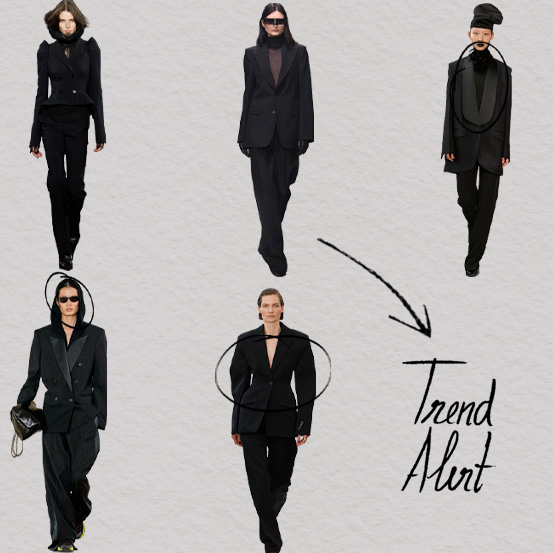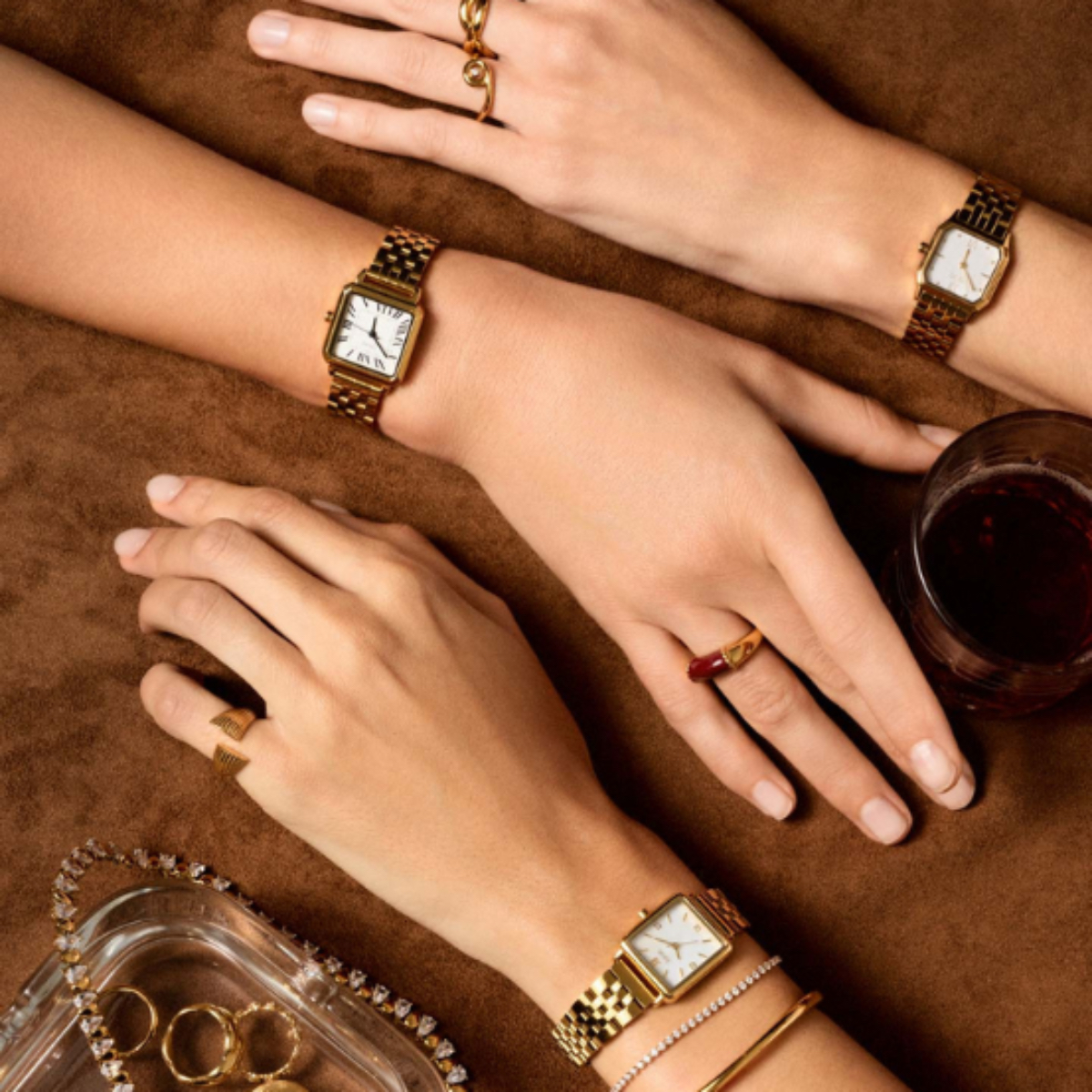Artwork by Aurora Reinhard.
We live in an era in which beauty trends are incessantly promoted and widely discussed. From miraculous supplements to aesthetic procedures, the pressure to look our ‘best’ has never been greater. However, by blindly following ‘fads’ we run the risk of getting lost in superficiality and forgetting the importance of an informed and critical approach. What, after all, are the nuances of this quest for perfection and what impact can it have on our health and well-being?
A few days ago, in an article published on the British Vogue website, the beauty editor recounted her experience of taking collagen every day for three months: ‘After one month, I actually felt that my otherwise-very-dry skin needed less topical moisture than usual. (...) After the full three months, I actually found that my skin looked a little plumper and I noticed that my fingernails were breaking less – another supposed benefit of collagen supplementation.’ And on and on it went, praising the wonders of this experience. I stopped reading when the journalist mentioned that she was ‘in her early twenties’ and therefore ‘didn't have many wrinkles’. But ‘the promise of plumper, radiant and moisturised skin caught my attention.’ If we do a Google search on the recommended age to start taking this type of supplement, the answers are plentiful, although the majority consider that 20, or even earlier (some have pointed to 12 or 15), would be ideal. Of course, these Google results come largely from websites selling collagen. I'm 43 and I don't take collagen. I have good skin, I drink a lot of water and, at the age of forty, I started to take my beauty routine seriously. Genetics? Lifestyle? Luck? I have no idea. What I do know is that in my twenties, my skin wasn't a problem, let alone a concern. And, like many people of my generation, I was sunburned and scalded. Admittedly, there wasn't as much information at the time and I'm glad that today we know, for example, that too much sun is bad for you and that you should use sun cream. But what are we to make of 10, 15 or 20-year-olds whose main concern is their ageing skin? Following trends religiously according to what fashion and social media dictate can have various repercussions. In addition to the loss of identity and individuality, this insane need for ‘social connection’ comes at a high price. In recent decades, we've seen bodies change from skeletal to healthy - with Gisele Bündchen leading the trend - then to ‘curves’ à la Dove, and finally to obese. ‘Fashions and trends certainly influence people when it comes to body changes. The pity is that they don't do it in the right and healthy way.’ These are the words from Paula Freitas, President of the Portuguese Society of Endocrinology, Diabetes and Metabolism. ‘Scientifically and biologically, we know the healthy body composition (lean mass, fat mass, bone mass) throughout life and the deviations - below or above normal limits. The location of fat also changes throughout life. For example, young women have more fat deposited on their thighs and buttocks (gynoid, ‘pear’ type) and after the menopause, fat is deposited more in the abdominal region (android, ‘apple’ type), which is related to the decrease in oestrogen, and this latter type of fat distribution is associated with a greater risk of cardiovascular disease.’ On balance, thinness corresponds to a BMI below 18.5 kg/m2, while obesity is a BMI above 30 kg/m2. ‘Extreme thinness, as with anorexia, can cause various physical and psychological complications, including hormonal changes, bradycardia and depression. Obesity, on the other hand, is associated with more than 200 comorbidities, including metabolic, mechanical and mental illnesses, as well as being costly to treat. Accepting your body is important, but pathological obesity should not be normalised or prevented from being treated.’ For plastic surgeon Rúben Malcata Nogueira, both the increased safety and reproducibility of results and the appreciation of physical and psychological well-being have contributed to the demand for ‘our best version’. According to the surgeon, ‘the entire medical-surgical arsenal at our disposal allows us to obtain optimum results and delay the ageing process’. He says that today there are no aesthetic procedures that are harmful in themselves. However, ‘the evolution of Plastic Surgery and Aesthetic Medicine, as well as some lack of control by the competent authorities, leads to untrained and unqualified people carrying out some procedures irresponsibly and in a way that is highly harmful to patients.
The existence of various products and techniques is, paradoxically, harmful. Often, the greatest harm lies in the poor aesthetic result obtained - due to the incapacity and lack of knowledge of the supposed professionals; other times, there are serious complications that put patients' lives at risk.” Rúben Nogueira considers it crucial to understand the patient's true needs - “this is the main point and one that is often overlooked in the hustle and bustle of consultations”. And he continues: “There's a question I ask in practically every consultation: ‘How long have you been dealing with this problem?’ - it allows me to understand whether surgery is something that was decided suddenly or whether it's a mature thought, with a few months (if not years) of reflection.” Luís Uva, a dermatologist and specialist in aesthetic medicine, explains that, as with fashion, trends in aesthetic medicine also follow cycles: “Procedures and techniques that were popular at one time can at one time can 'return to the scene' years later. Previously, it was observed that aesthetic trends returned every 30 years, but with the fast pace of modern society, this cycle has shortened. Nowadays, patients are looking to reverse or correct aesthetic procedures that followed passing fashions in ever shorter periods of time.” For this professional, there is a duty to thoroughly understand what brings the patient to the consultation, analyse the most suitable options together, work out expectations properly and plan with the patient how their face or body will be modified. “Regardless of where we are in the chronology of trends, patient safety, accurate diagnosis and professional pride must be a priority,” he adds. There is a very broad spectrum of changes made to follow trends: in the case of aesthetic medicine, usually carried out in a doctor's office, trends are completely reversible, either by the effect of time (for example, the effect of botulinum toxin disappears after 4-6 months), or by the application of antidote products (as in the case of hyaluronic acid used in facial and body fillers). As for plastic surgery, the procedures are partially reversible. “When I realise that the decision is hasty, ill-founded or rushed, I try to demonstrate the real positives and negatives. When human medicine is carried out with values and understanding, fleeting trends have no place,” concludes the plastic surgeon. Paula Freitas brings up the subject of anabolic androgenic steroids, such as testosterone and its synthetic derivatives, considering it “morally and ethically necessary to address the use of these substances. It is crucial that users are aware of the associated risks, which include cerebral and behavioral adverse effects (such as addiction and aggression), cardiovascular problems (such as hypertension and thrombosis), hematological alterations (increased cholesterol), hepatic (hepatitis and cancer), musculoskeletal (muscle ruptures) and urinary (kidney failure). In men, gynecomastia, impotence and testicular atrophy may occur; in women, breast atrophy and menstrual irregularities.”
Both plastic surgery and aesthetic medicine are going through a phase of great growth and popularity. And this is (also) why social responsibility in the practice of these sciences plays a fundamental role. As the surgeon said, constant scientific and social updating is necessary, as this is the only way to be aware of today's world and understand many of the motivations behind consultations. “Health communication is vital. We've evolved from parental medicine to medicine with shared responsibility, which has brought new challenges and new responsibilities. We have to be able to share information with all patients, and the media plays an extremely important active role, whether it's preventative, informative or educational.” According to dermatologist Luís Uva, “regardless of where we are in the chronology of trends, patient safety, accurate diagnosis and professional pride must be a priority. And this is where ethics and understanding what brings the patient to the consultation must come together: more than what you want, it's important to understand what you really need.” Returning to the initial question of collagen taken and advised by a twenty-something journalist: before the Internet, it's best to consult professionals in the field. The Parable of the Blind, depicted in the work The Blind Leading the Blind by Pieter Bruegel the Elder, illustrates a severe criticism of lack of discernment and inadequate leadership. Based on Matthew 15:14, where Jesus criticises the Pharisees saying: “Leave them alone. They are blind and lead the blind. If one blind man leads another, they will both fall into the same ditch”, this parable is a metaphor for the danger of following the advice of those who do not have adequate knowledge or insight into a particular subject.
Translated from the original in Vogue Portugal's The Big Book of Trends, published September 2024. Full stories and credits in the print issue.
Most popular

O que lhe reservam os astros para a semana de 30 de dezembro a 5 de janeiro
30 Dec 2025
.jpg)
.jpg)
Relacionados


O que lhe reservam os astros para a semana de 30 de dezembro a 5 de janeiro
30 Dec 2025



.jpg)
